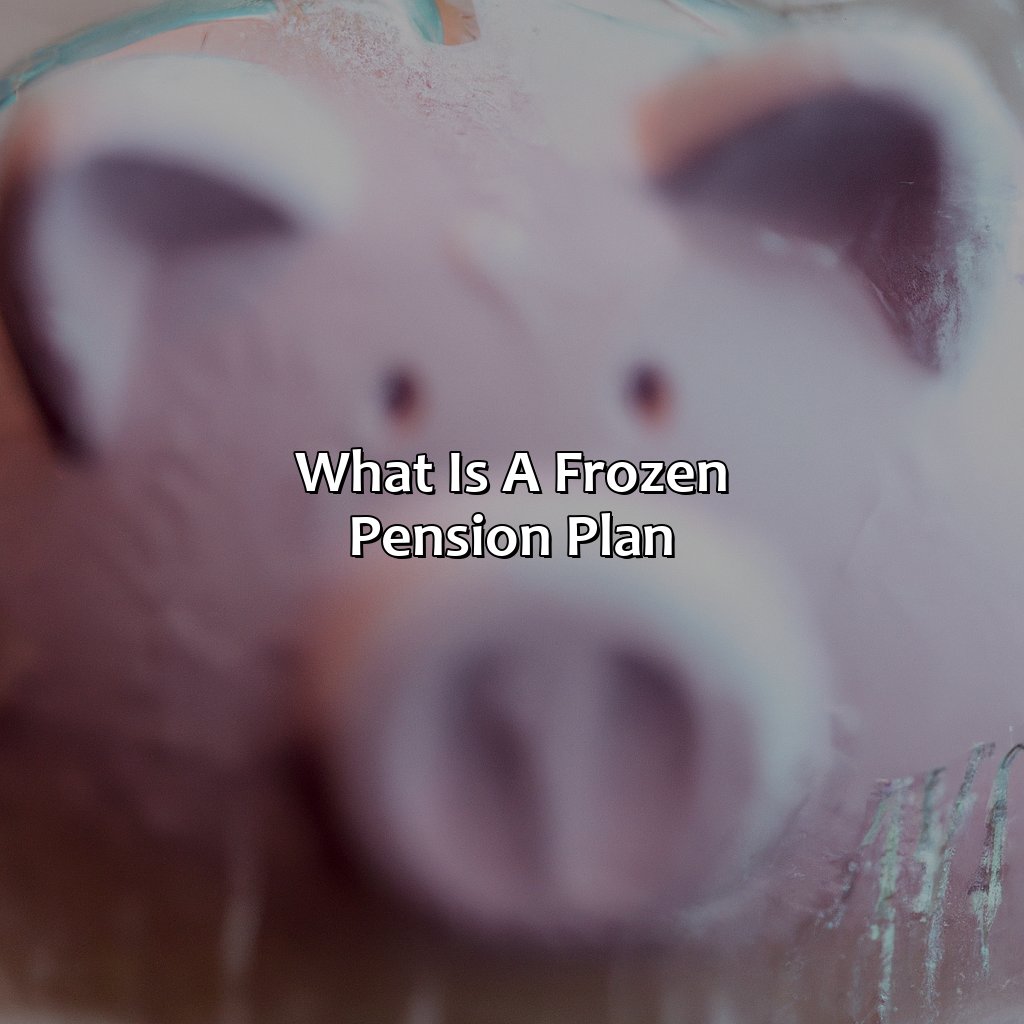What Is A Frozen Pension Plan?
Key Takeaway:
- A frozen pension plan is a defined benefit retirement plan that has stopped accruing benefits for its participants.
- A pension plan may freeze due to several reasons, such as financial difficulties of the employer, merger or acquisition, or a change in the company’s retirement plan structure.
- A frozen pension plan means that participants will no longer earn additional benefits, and their benefits are usually capped at the point of the freeze. However, their existing benefits are still protected and guaranteed by the Pension Benefit Guaranty Corporation (PBGC) in case of the employer’s bankruptcy or insolvency.
Do you worry about your retirement plan? It can be a daunting task to properly manage a pension plan, and a frozen pension plan can add to the complexity. You need to understand what a frozen pension plan is in order to maximize the value of your retirement savings.
What is a Frozen Pension Plan?
What is a frozen pension plan? Let’s explore! We’ll look at its definition and description. Plus, we’ll dive into why a pension plan may be frozen. Get the facts to uncover a clearer picture!
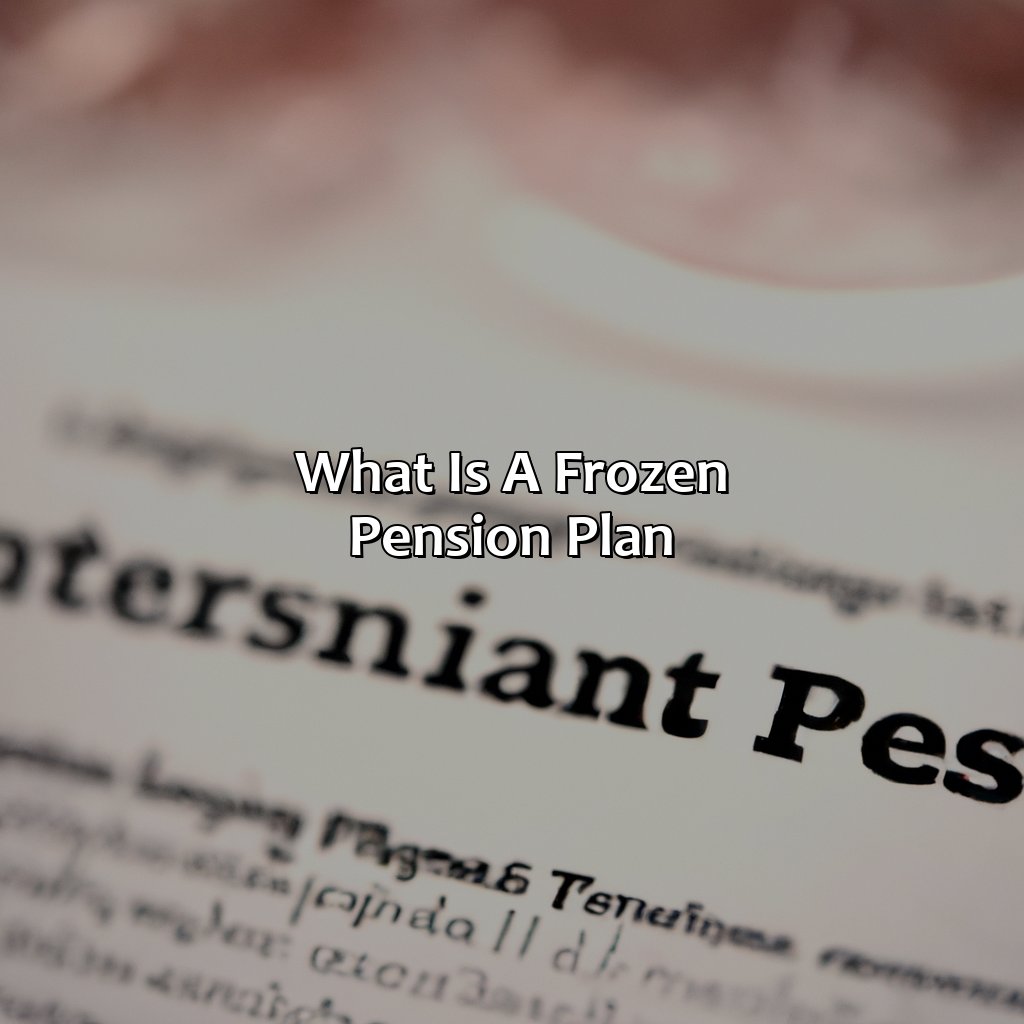
Image credits: retiregenz.com by David Duncun
Definition and Description
A Frozen Pension Plan refers to a type of pension plan that has been closed or discontinued, with employees no longer able to make contributions. The plan continues to provide benefits based on accrued funds before the freezing point. This is also known as a closed or preserved pension plan.
The benefit payments for frozen pension plans are typically determined by the employee’s salary and service history at the time of the freeze. Any growth in investments after the freeze date does not contribute towards their retirement income.
An important aspect to note is that despite being frozen, these plans are still subject to regulatory requirements and government oversight. Employers must continue to meet their obligations for funding and reporting on the plan’s financial status. If you want to know more about pension funds, visit our website.
Frozen pension plans have become more prevalent in recent years due to employers moving away from traditional defined benefit pensions towards defined contribution plans such as 401(k)s.
Historically, many large corporations used frozen pension plans as a means of cost-cutting while preserving benefits for existing employees. However, this has led to criticism over potential inequality between younger workers who only have access to defined contribution plans and older workers who have both defined benefit and defined contribution plans available.
Freezing a pension plan is like giving it a brain freeze – it can’t move, think or grow.
Reasons for a Pension Plan to Freeze
When a pension plan becomes static and unresponsive to changes in the economy or workforce, it may enter a “frozen” state. Several factors can lead to this status, including liability concerns, operational costs, declining funding levels, and mergers or acquisitions. Once frozen, the employer no longer makes contributions to the plan while employees still accrue benefits. This decision can impact retirement savings and have long-term financial consequences for both employers and employees.
In some cases, employers may choose to freeze only certain aspects of the plan, such as suspending benefit accruals for specific groups or freezing plans retroactively. Other strategies include gradual wind-downs or conversions to alternative retirement arrangements like 401(k)s. Regardless of the method chosen, if you are wondering what is pension debt, the reasons behind a pension plan freeze are often complex and require careful consideration.
It’s worth noting that not all frozen pension plans create negative outcomes. Some employers elect to stay with their current plan despite freezes because they continue meeting their fiduciary obligations and desire retention of existing account values for employees particularly those who were actively accruing benefits before it entered its frozen state.
Historically many firms imposed freezes to avoid funding deficiencies under ERISA regulations mandated by US legislation in 1974 over concerns about defined benefit plans failing. However, as industries shift towards nontraditional employment practices like contract labor hiring agencies so too have pensions move on from being an effectual structure guaranteeing promised pensions allowing more portable contribution arrangements inside self-directed accounts instead.
Why put your pension on ice? Because nothing says ‘retirement goals’ like a frozen future.
How Does a Pension Plan Freeze Work?
To comprehend how a pension freeze works, you must realize it consists of three steps:
- First, your advantages cease to increase.
- Second, the value of your benefits are kept the same as they were when they stopped increasing.
- Lastly, the frozen pension plan can have an effect on those involved.
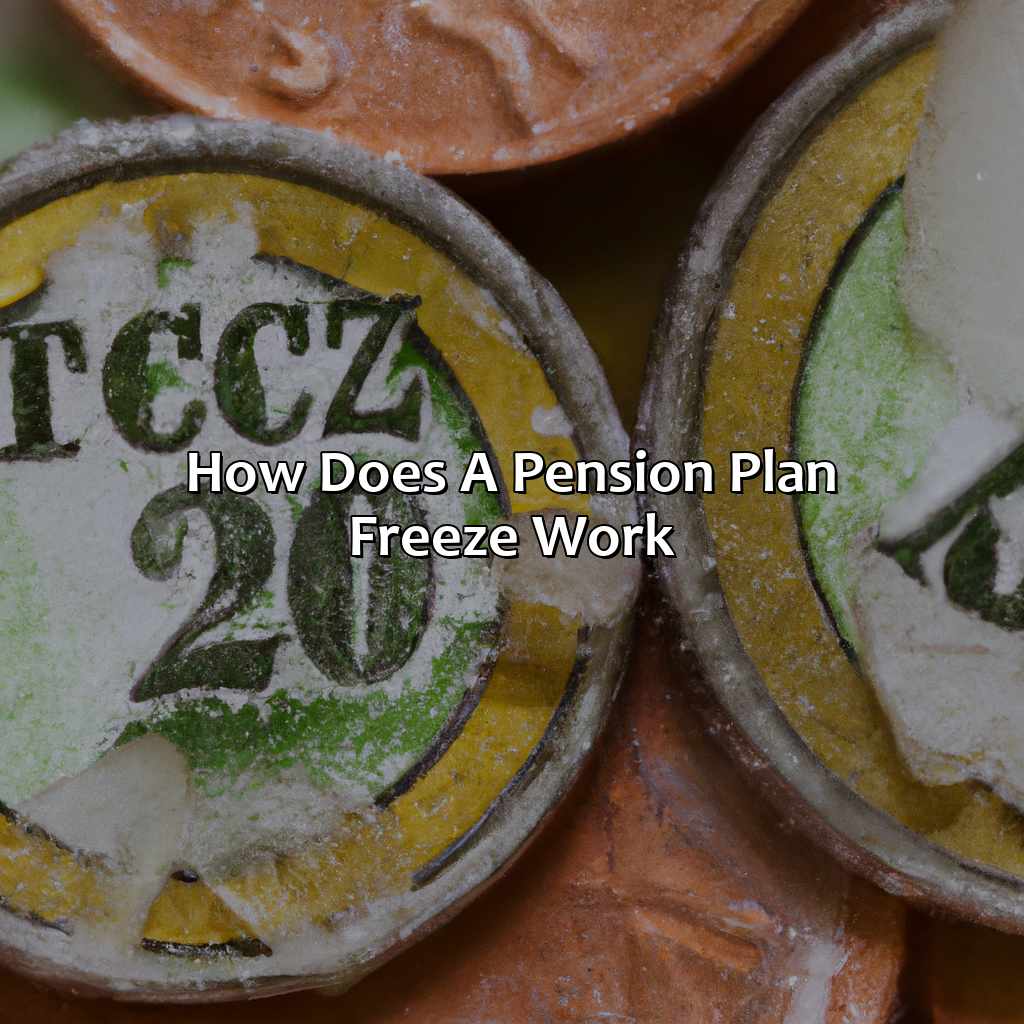
Image credits: retiregenz.com by Adam Washington
How Benefits Stop Accruing
As a pension plan participant, it is essential to know how benefits stop accruing. Pension plan freezes occur when the employer decides to halt the increase of pension benefits without terminating the plan altogether. The reasons behind this decision might include financial troubles or a shift in company strategy towards other retirement plans.
During a pension freeze, participants will no longer accumulate additional years of service, and their benefit calculations will be based on their eligible benefits as of the freeze date. However, frozen pension plans still offer certain forms of payment like annuity payments or lump sum distributions. To understand more about frozen pension plans, it’s important to know about other types of pension plans including the money purchase pension plan.
It is crucial to note that pension freezes do not cancel employee benefits earned up until the time of the freeze. As such, it is advisable for employees with frozen plans to continue tracking their contributions and monitor any future updates on their account status. If you are wondering about retirement plans, you may want to look into what is CAAT pension plan for more information.
Overall, participants should stay well-informed about what is a pension sharing order and their frozen pension plans’ provisions and seek additional professional advice if needed. By doing so, they can better prepare for retirement and ensure full utilization of their entitlements instead of facing any unforeseen issues in the future.
In a true story shared by an employee whose company froze its pension plan mid-career reveals how it can impact one’s financial goals unexpectedly. Due to inadequate knowledge about the provisions of a frozen plan, he had proposed an early retirement plan at 50 with assumptions based on past compensation trends. But later on realized when calculating his retirement income that his defined-benefit has almost stopped accruing since then due to a freeze date determined years ago!
Are you wondering how is a pension paid out? It is important to understand the details of your pension plan to avoid any surprises in the future.
Preserving benefits is like freezing your ex’s stuff. You hope you never have to use it, but you just can’t let go.
How Benefits are Preserved
Pension plans that are frozen still preserve benefits for employees who have vested in them. These benefits are protected until they become eligible for distribution as soon as the pension plan is unfrozen. The frozen pension plan continues to earn investment returns, which further increase the value of the preserved benefits.
Employee contributions and the accumulated interest or earnings in a frozen pension plan are also protected. Therefore, individuals can choose to leave their existing savings in the pension fund, resulting in larger benefits when they’re eventually disbursed. Alternatively, they might transfer these benefits to another registered retirement savings program to acquire more flexibility. Learn more about commuted value of pension and its benefits.
There may be several factors why employers freeze their pension plans but mostly because of cost-cutting measures or other financial issues This also helps companies to limit their exposure to market risk by capping any additional requirements of ongoing pensions funding.
A prime instance occurred when General Motors froze its pension plan back in 2007 because of deteriorating economic interests and rising healthcare and pension obligations. Many other companies followed suit across different sectors, albeit with slight diversions.
Looks like frozen pension plans are just like my ex – they both leave you cold and without any guaranteed income.
How Frozen Pension Plans Affect Participants
Pension plan freeze can affect participants in many ways. The most evident effect is that participants’ future benefits will not receive any accrued benefits once the freeze begins. Consequently, this may lead to lower retirement income. Additionally, frozen pension plans may result in employees having less confidence in the employer’s commitment to their welfare.
It is important to note that employers typically freeze pension plans when they can no longer afford to fund them or mitigate financial risks. However, at times, a pension plan freeze may be temporary or part of a larger restructuring effort intended to reduce costs and remain competitive.
It is interesting to learn that adopting frozen pension plans has become a common practice for companies that seek cost management strategies while maintaining low employee turnover rates. For example, during the 2008 financial crisis, several companies implemented freeze policies as an attempt to mitigate financial risks brought by economic uncertainties.
A notable instance was General Motors (GM), which partially froze its career-average defined benefit plan with specified monthly payments formula. As a result of widespread job cuts and restructuring efforts aimed at achieving sustainability in an ever-changing market environment, GM ceased offering defined benefit pensions altogether by 2012 based on significant business losses earlier on.
Looks like your retirement plans just got put on ice – the consequences of a frozen pension plan may not be so hot.
Consequences of a Frozen Pension Plan
Comprehend the results of a frozen pension plan? Consider the limited benefit rises, employer contributions and investment choices as solutions.
These subsections will show the financial results of a frozen pension plan and its effect on your retirement portfolio.
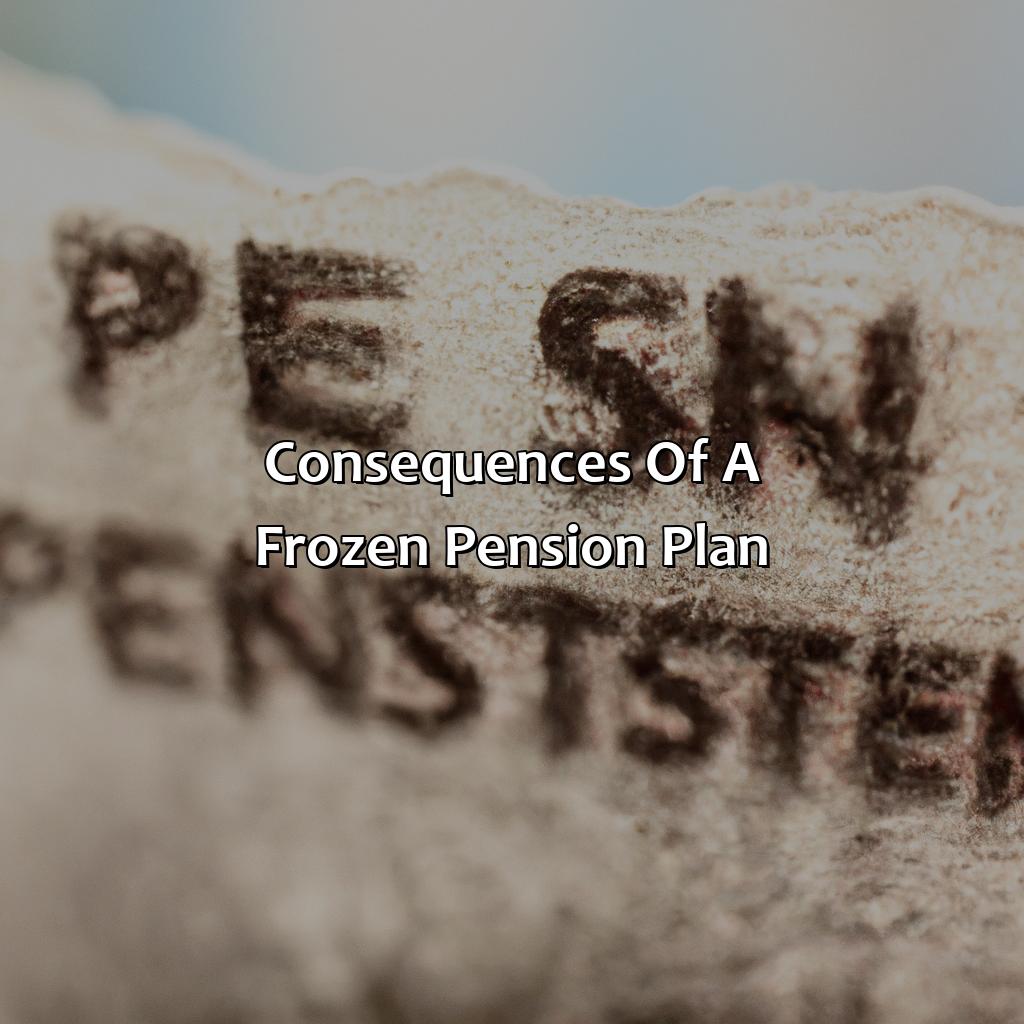
Image credits: retiregenz.com by Yuval Jones
Limited Benefit Increases
The pension plan’s restricted benefit increases may occur due to it being frozen. The retired individuals may experience a pause in the payout modifications linked with inflation or pay growth. This results in reduced financial security for the retiree than they had initially anticipated.
Moreover, the limited benefit increase scheme can cause pensioners’ essential needs to surpass the income they’re receiving. As a result, older people must rely on different sources of finance for supplementary expenditure not covered by superannuation pension scheme.
A frozen pension plan can create cashflow challenges for retirees who rely mainly on their pension payout. Some graduates have chosen to borrow funds against their property or enter an equity release scheme to address these pension loan problems.
Pro Tip: Be sure to seek investment advice from a certified financial planner when contemplating a cash influx strategy to supplement your frozen retirement fund.
Looks like your employer’s contributions to your pension plan are frozen too, just like your hopes for a comfortable retirement.
Limited Employer Contributions
An Analysis of Restricted Contributions by an Employer in a Frozen Pension Plan
When a pension plan is frozen, employers restrict contributions to the plan. This means that employees will no longer receive contributions from their employer to fund their retirement or pension account. This situation can lead to lower retirement income and reduced benefits for employees who have been affected by this action.
Employers who freeze their pension plans often do so to cut costs or because they are facing financial difficulties. Instead of contributing regularly into a retirement fund, the employer may offer a lump sum payout, reduce the amount contributed or stop contributing altogether. These companies may switch to offering defined contribution plans such as 401(k)s where the benefit is taken out of the business’ hands and put into the responsibility of individual workers.
The result of limiting contributions on behalf of an employee is that workers often face a massive reduction in retirement money they may have planned on receiving post-retirement. Many older workers who had expected significant retirement benefits will be left with significantly lower payouts, affecting their standard of living in old age.
It’s essential for employers and employees both to consider alternatives and options before making any drastic changes that could affect pension payments over long periods. Failure on either part can lead to severe consequences such as employee dissatisfaction, increased unemployment claims by unsatisfied individuals and workforce retention challenges. Thus it’s necessary to weigh all perspectives carefully when considering freezing your company’s pension payout rate before implementing such changes forcefully without informing your workers beforehand.
With limited investment options, the only thing frozen about your pension plan may be your returns.
Limited Investment Options
A Frozen Pension Plan can limit investment options, which decreases an employee’s control over their retirement funds. With limited options available in a frozen plan, potential returns may be lower and employees may lose out on growth opportunities.
In addition to the limitations, fees and expenses remain the same or could increase in some cases, further reducing the employees’ retirement savings.
It is crucial to explore alternative retirement investment options such as an IRA or 401(k) plan to supplement a frozen pension plan. This allows diversification of investments and can lead to better returns on investment. Companies should also consider offering an updated retirement plan with flexible investment options that accommodate the needs of employees.
Dealing with a frozen pension plan is like trying to thaw a frozen turkey – it takes time, effort, and may require some creative solutions.
Tips for Dealing with a Frozen Pension Plan
Handle frozen pension plans? Get the facts! Essential tips to help you out.
- Consult a financial advisor.
- Understand your retirement needs.
- Evaluate both.
That’s the way to go!
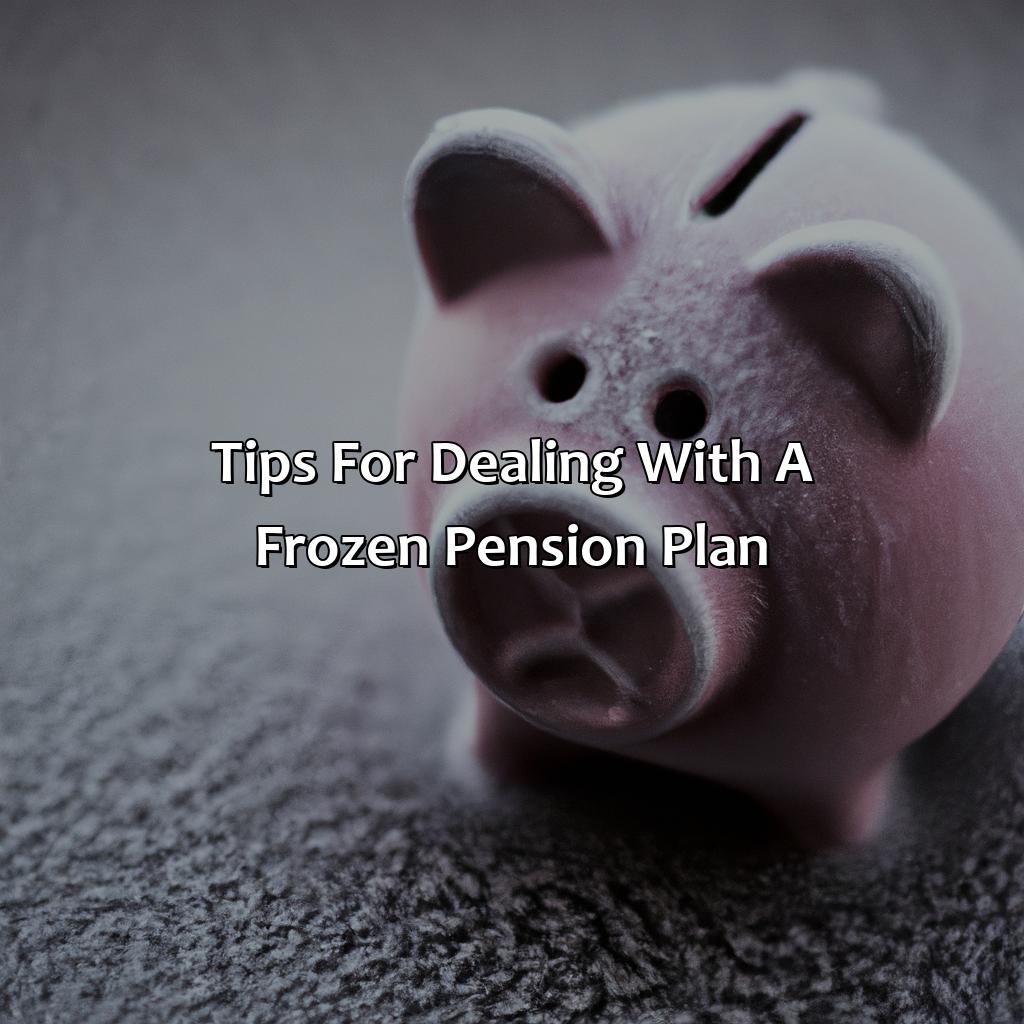
Image credits: retiregenz.com by Joel Washington
Understanding Your Options
When it comes to dealing with pension plans that are frozen, there are multiple options available. Understanding these options can help you make informed decisions about your financial future.
The following table lays out some of the potential courses of action for addressing a frozen pension plan.
| Option | Description |
|---|---|
| Leave it be | Continue to let the funds remain in the plan until retirement age |
| Roll over | Move the funds into an IRA or other type of retirement account |
| Lump sum payout | Take all funds in the pension plan at once and transfer elsewhere |
It’s important to note that each individual’s circumstances will vary, and what works best for one person may not be ideal for another. Consulting with a financial advisor can help clarify which option is best suited to your unique situation.
Pro Tip: Researching alternative ways to create a stream of income aside from relying solely on a frozen pension plan can offer added stability in retirement. Don’t just throw your money at any financial advisor, make sure they’re not just frozen in their ways too.
Consulting With a Financial Advisor
When dealing with managing a frozen pension plan, it can be beneficial to seek guidance from a financial advisor. These advisors have knowledge and experience working with individuals in similar situations, and can provide valuable insights and advice on how to navigate the complexities of frozen pensions.
By consulting with a financial professional, individuals can obtain personalized advice tailored to their unique situation, including strategies to maximize their retirement savings and minimize tax burdens. Advisors can also assist in evaluating various pension plan options, such as lump sum payouts or annuities, and help individuals make informed decisions that align with their retirement goals.
Furthermore, financial advisors may recommend alternative investment options outside of traditional pension plans that could provide higher returns or greater flexibility. They can educate individuals on potential risks associated with these investments and work together to create a diversified portfolio that balances risk and reward.
It’s important to choose an advisor who is reputable and has expertise in pension plan management. Seeking references from friends or colleagues or researching online reviews can help narrow down the search for a qualified professional.
Retirement needs evaluation: because nothing says ‘golden years’ like eating cat food for dinner.
Evaluating Retirement Needs
To ensure a comfortable retirement, it is essential to evaluate the amount of money needed to support one’s lifestyle. This process involves considering various factors such as living expenses, healthcare costs, and expected lifespan.
One critical area of retirement planning is the evaluation of pension plans, including frozen pension plans. These types of plans are no longer accruing benefits, and payouts are delayed until a specified date. Frozen pension holders need to assess how their frozen plans can be leveraged in retirement planning. If you’re looking for more information on pay as you go pension plan, RetireGenz can help.
It is crucial to examine the reasons why your pension plan has been frozen – whether due to company mergers or acquisitions or financial troubles – and its implications for future payouts. Consider consulting with an expert financial planner who can help navigate this complexity.
Understanding pension plan details concerning eligibility for benefits and payout structure will inform better independent decision making during the retirement phase.
Frozen pension plans impact finances significantly in retirement; understanding options available is key. Such was the story shared by Jane when her corporate employer shut down while she was only two years away from retirement. The pension plan was frozen and required professional advice, which she decided to get from a trusted advisor.
Five Facts About Frozen Pension Plans:
- ✅ A frozen pension plan is a retirement plan that is no longer open to new employees and only benefits current and past employees. (Source: Investopedia)
- ✅ Employers freeze pension plans to cut costs and shift employees to 401(k) plans, which are typically less expensive to manage. (Source: Nolo)
- ✅ Frozen pension plans do not accrue new benefits for employees, but the benefits already earned are generally protected. (Source: The Balance)
- ✅ Frozen pension plans can be risky for employees who have not yet fully vested in the plan, as they may lose some or all of their benefits if they leave the company before vesting. (Source: AARP)
- ✅ Some employers offer various options for employees with frozen pension plans, such as taking a lump sum payout or rolling the benefits over into an individual retirement account (IRA). (Source: Forbes)
FAQs about What Is A Frozen Pension Plan?
What is a frozen pension plan?
A frozen pension plan is a retirement savings plan that is no longer active for new participants. In other words, no new contributions are being made to the plan, but existing participants still have money invested in it.
Why do pension plans get frozen?
Pension plans get frozen for a variety of reasons. These include the company going bankrupt, a change in company ownership, or a decision to switch to a different type of retirement plan.
What happens to my frozen pension plan?
Your frozen pension plan will continue to be managed by the plan administrator and your investments will continue to grow over time. You will not be able to make any new contributions to the plan, but you will still have access to any funds that are already vested.
Can I still receive benefits from my frozen pension plan?
Yes, you can still receive benefits from your frozen pension plan. These benefits will depend on the terms of your plan and may include a lump-sum payment or monthly payments over time.
Can I roll over my frozen pension plan into another retirement plan?
Whether or not you can roll over your frozen pension plan into another retirement plan will depend on the specific terms of your plan. In some cases, you may be able to roll over your funds into an individual retirement account (IRA) or a 401(k) plan.
What should I do if I have a frozen pension plan?
If you have a frozen pension plan, you may want to consider speaking with a financial advisor to help you understand your options. They can help you decide whether to leave your investments where they are, roll them over into a new plan, or take other actions to maximize your retirement savings.
